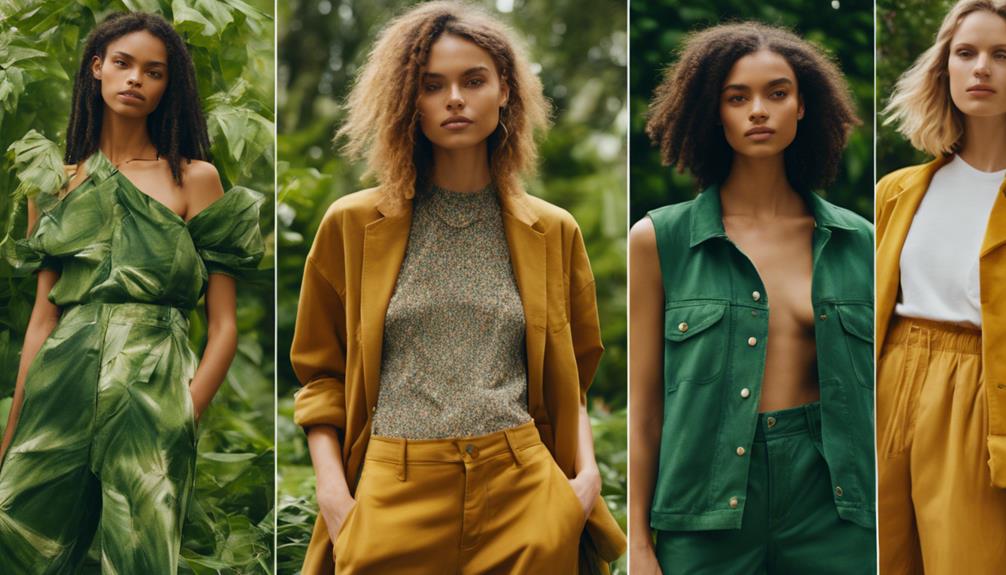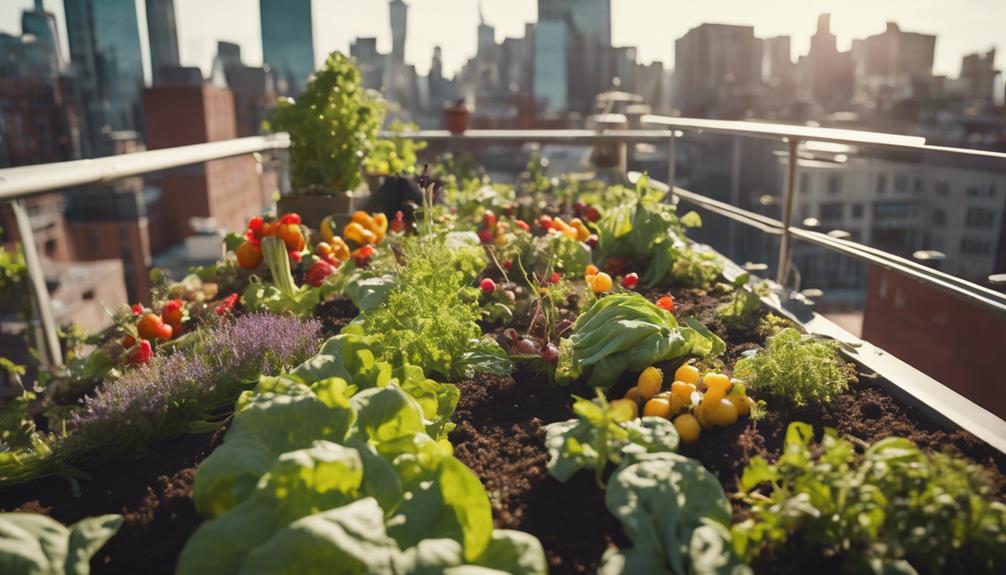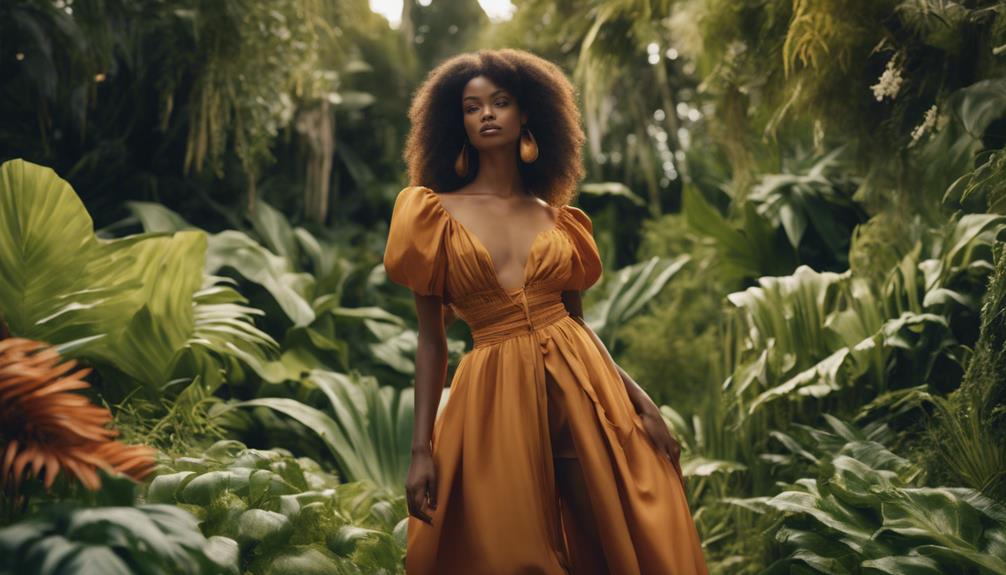When you are exploring sustainable fashion, you will come across a wonderful array of brands. For affordable options, consider checking out Pact and Girlfriend Collective. Eco-conscious labels like Amour Vert and Kotn are definitely worth exploring. Tentree and Eileen Fisher are leading the way in circular fashion innovation with their sustainable practices. Ethical brands such as Toms and Ninety Percent place a strong emphasis on fair labor. You can also browse through vintage or pre-loved items for a special touch. Additionally, do not forget about luxury options like Stella McCartney and sustainable footwear from Allbirds. Interested in learning about more brands making strides in sustainability? There are many more to uncover! Stay on the lookout for emerging sustainable fashion brands that are continuously pushing the boundaries of eco-friendly design and production. From upcycled materials to zero-waste practices, these brands are at the forefront of the movement towards a more sustainable fashion industry. Whether you are in need of everyday essentials or standout pieces, there is a wide selection of sustainable fashion brands to choose from, each offering its own distinctive approach to sustainability.
Key Takeaways
- Pact offers GOTS certified organic cotton basics, highlighting biodegradability in their sustainable clothing range.
- Girlfriend Collective provides size-inclusive athleisure made from recycled materials, promoting sustainability and body diversity.
- Eileen Fisher uses organic and recycled materials to create timeless designs while focusing on ethical labor practices.
- MUD Jeans promotes a leasing model for jeans, encouraging recycling and a closed-loop fashion system.
Budget-Friendly Sustainable Brands
Sustainable fashion doesn't have to break the bank; several budget-friendly brands offer stylish, eco-conscious options without sacrificing quality or ethics. Brands like Pact focus on providing sustainable basics made from GOTS certified organic cotton, ensuring affordability while maintaining ethical production practices.
Fair Indigo takes it a step further by offering biodegradable clothing and supporting social good through the Fair Indigo Foundation.
If you're into athleisure, Girlfriend Collective delivers size-inclusive options made from recycled materials at accessible prices. Everlane is another standout, emphasizing transparency in pricing while offering high-quality basics crafted from sustainable materials.
For those seeking vegan-friendly options, Boody uses OEKO-TEX® certified bamboo in its budget-friendly clothing, catering to a wide range of sizes. Outerknown and Adidas also shine in this space, with a commitment to sustainable designs and affordable activewear, respectively.
These brands prove that you can build a stylish, sustainable, and ethical wardrobe without overspending. By choosing budget-friendly options, you're not just saving money; you're making a positive impact on the planet and supporting ethical practices in the fashion industry.
Organic and Eco-Friendly Labels

Organic and eco-friendly labels are revolutionizing the fashion industry by offering stylish choices that prioritize the planet and ethical production.
You'll find sustainable fashion brands like Amour Vert, which plants a tree for every t-shirt sold, showcasing how eco-friendly materials can support both nature and style. Kotn stands out as a Certified B Corp, using biodegradable materials while giving back to Egyptian communities, proving that ethical production can also be budget-friendly.
Thought Clothing offers timeless designs crafted from organic cotton and bamboo, emphasizing fair trade practices. Boody stands out with its OEKO-TEX® certified bamboo, providing vegan-friendly options and demonstrating a strong commitment to sustainability. Pact is another notable brand, producing GOTS certified organic cotton basics and prioritizing biodegradable materials.
If you're in search of stylish athleisure, Girlfriend Collective provides size-inclusive options made from recycled materials, while Outerknown and Adidas are committed to sustainable practices in their collections.
These brands not only utilize organic materials but also guarantee ethical production, making it easier for you to choose fashion that reflects your values. Your wardrobe can now be both trendy and environmentally conscious!
Circular Fashion Innovators
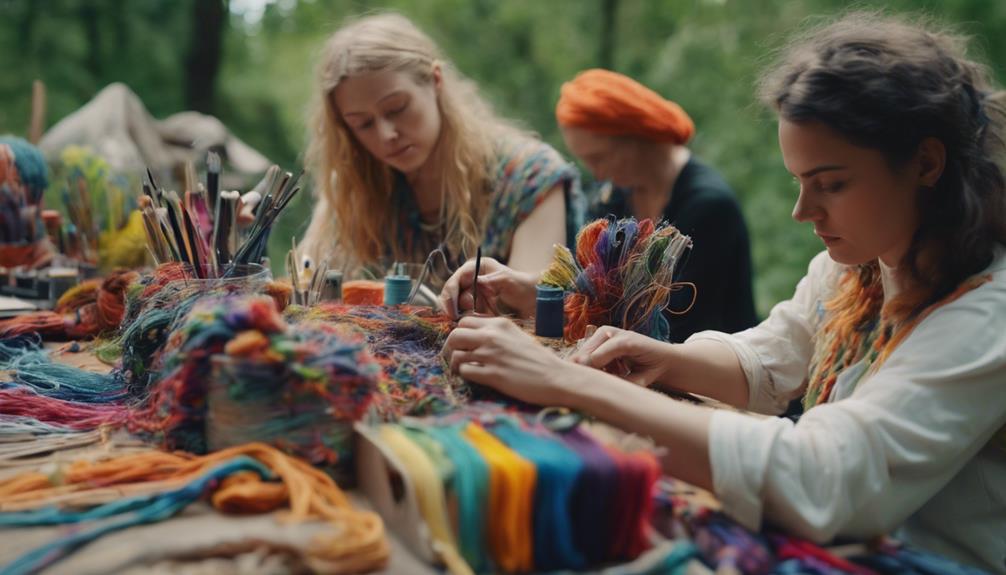
Many fashion brands are now embracing circularity, innovating ways to design products that can be reused, repaired, or recycled to greatly cut down on waste.
Brands like tentree and Eileen Fisher are leading the charge by incorporating sustainable practices into their operations. Tentree plants ten trees for every purchase and focuses on biodegradable products, while Eileen Fisher uses organic and recycled materials to create timeless designs.
MUD Jeans takes a unique approach in the denim sector with a leasing model that encourages customers to return their jeans for recycling, promoting a closed-loop system. Meanwhile, Pangaia utilizes bio-based and recycled materials, focusing on technology-driven sustainable textiles.
Girlfriend Collective excels in athleisure by sourcing post-consumer recycled materials, further enhancing the circular fashion movement. Outerknown emphasizes transparency in its supply chain and eco-friendly materials.
Finally, Adidas is making strides with collections that feature recycled polyester and collaborates with initiatives like Parley for the Oceans.
These circular fashion innovators aren't just reducing waste—they're redefining how we think about clothing and its lifecycle.
Ethical Labor Practices

Ethical labor practices are at the forefront of the fashion industry, guaranteeing fair wages and safe working conditions for workers around the globe. Brands like People Tree and Nisolo are leading the charge by emphasizing sustainable and ethical practices. They ascertain that artisans receive fair wages while maintaining a transparent supply chain that showcases their commitment to accountability.
Toms and Eileen Fisher also prioritize ethical labor, with Toms adopting a one-for-one giving model and Eileen supporting circular fashion initiatives. Ninety Percent stands out by donating 90% of its profits to garment workers and charitable causes, reflecting a strong commitment to social responsibility.
Brands like Cuyana and Naadam assure safe working conditions and fair wages for their artisans, while Girlfriend Collective provides detailed insights into its factories, promoting transparency. Outerknown partners with factories that adhere to high ethical standards and engages with the Fair Labor Association to uphold compliance.
Even giants like Adidas are getting involved, collaborating with initiatives like the Better Cotton Initiative to improve working conditions for cotton farmers. Each of these brands exemplifies the shift towards sustainable and ethical practices in fashion, making a difference for workers worldwide.
Size Inclusive Options
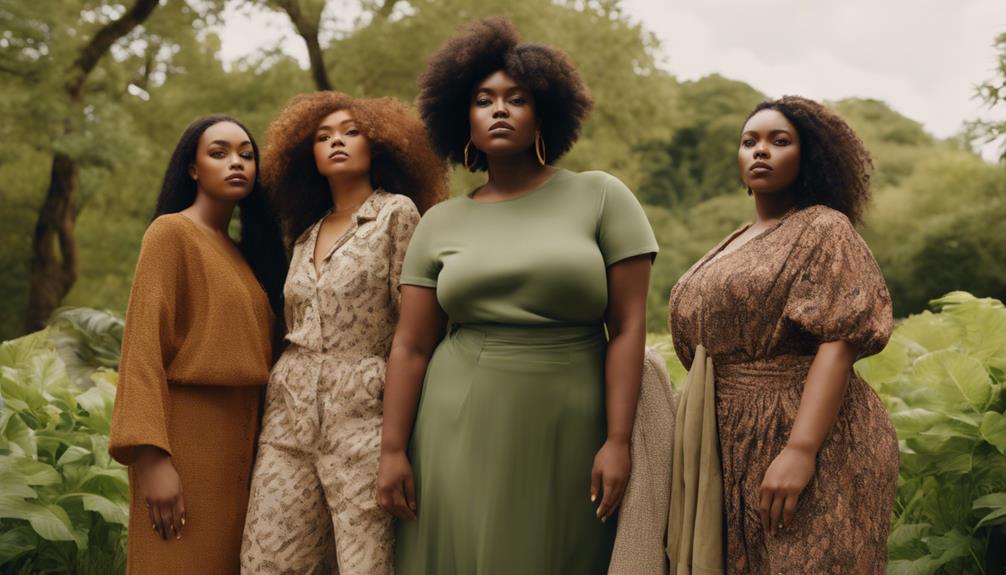
When you explore sustainable fashion, you'll find brands prioritizing size inclusivity, offering diverse options for every body type.
These brands recognize that fashion should be accessible and stylish, regardless of size.
Diverse Size Offerings
Sustainable fashion brands are increasingly recognizing the importance of diverse size offerings, guaranteeing that everyone can find stylish and eco-friendly clothing that fits well. Size inclusivity isn't just a trend; it's a commitment to making ethical production accessible to all body types.
Here are some standout brands leading the charge:
- Warp + Weft: Offers an impressive 75 sizes, from XS to 3XL (up to US 24), catering to a wide range of body shapes.
- Girlfriend Collective: A leader in size-inclusive athleisure, providing options from XXS to 6XL, making sustainability achievable for everyone.
- Reformation: Committed to sustainability, they offer a broad range of styles from XXS to 3X (up to US 24), focusing on regenerative fabrics.
- Boody: Features a size-inclusive range from XS to 4XL, using sustainable bamboo materials for their vegan-friendly clothing.
These brands not only prioritize sustainable practices but also guarantee that their offerings reflect true size inclusivity, allowing you to shop confidently and ethically.
Inclusive Fashion Initiatives
Many brands are now implementing inclusive fashion initiatives by offering a wide range of size options, ensuring that everyone can embrace stylish and eco-friendly clothing.
Sustainable brands like Warp + Weft provide an impressive 75 sizes, from XS to 3XL, while using less than 10 gallons of water per jean. Reformation also stands out, offering size inclusive options from XXS to 3X and aiming for a climate-positive status by 2025.
Ethical fashion advocates like Yes Friends feature Fair Trade clothing available in sizes XXS to XXL, promoting responsible labor practices. Brands such as Boody prioritize sustainability with vegan-friendly options from XS to 4XL, utilizing certified bamboo materials.
Girlfriend Collective leads in size-inclusive athleisure, catering to diverse body types with recycled materials. Cuyana emphasizes quality and timeless designs in various sizes, while Outerknown and Adidas integrate size-inclusive options in their collections, reflecting a commitment to responsible fashion.
With these initiatives, it's clear that size inclusive offerings are becoming a priority for many sustainable brands, making ethical fashion accessible to everyone.
Vintage and Pre-Loved Finds
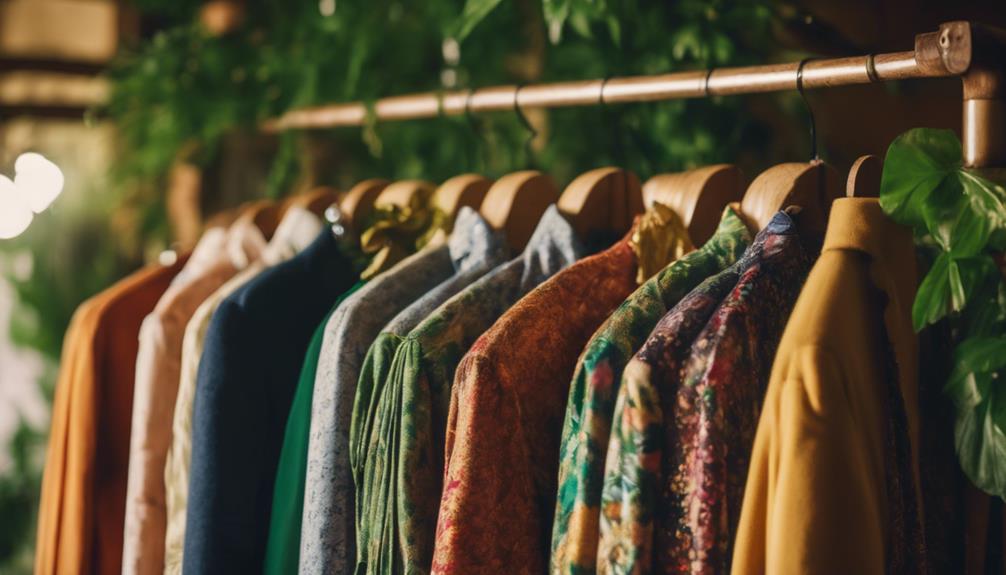
Diving into vintage and pre-loved finds not only helps you score unique pieces but also plays an essential role in reducing textile waste and supporting eco-friendly practices. By choosing second-hand fashion, you actively contribute to a sustainable future. Here's how:
- Reduce Waste: The average American generates 75 pounds of textile waste annually. Buying pre-loved items helps decrease this staggering figure.
- Support Circular Fashion: Brands like Toad & Co promote vintage clothing, encouraging sustainable consumer habits.
- Repurpose Materials: Christy Dawn creates vintage-inspired clothing from deadstock fabrics, emphasizing the repurposing of materials that would otherwise be discarded.
- Thrift Store Treasures: Platforms like Depop and Poshmark make it easy to find unique pieces, extending the life cycle of garments and fostering a culture of circular fashion.
Embracing vintage and pre-loved clothing not only reduces your carbon footprint but also allows you to express your individuality with one-of-a-kind items.
With the second-hand market projected to reach $64 billion by 2024, you're not just following a trend; you're making a conscious choice for the planet.
Innovative Sustainable Practices

Explore how innovative practices are transforming the fashion industry into a more eco-friendly landscape, with brands leading the charge in sustainability.
Companies like Pangaia are pioneering sustainable materials, showcasing FLWRDWN™, a unique down alternative made from flowers, and C-FIBER™, a fiber sourced from ocean waste. These innovations considerably lower landfill waste and reduce environmental impact.
FRAME's biodegradable denim is another impressive advancement, designed to break down in landfills, effectively eliminating harmful substances typically found in denim. Meanwhile, E.L.V. Denim reworks post-consumer waste into stylish jeans, using only seven liters of water per pair, promoting water conservation.
Upcycling is gaining traction, with Conner Ives utilizing vintage and deadstock materials, while We-AR4 repurposes luxury deadstock into chic, climate-positive clothing. Cuyana's 'Lean Closet' initiative encourages mindful consumption, urging you to invest in timeless, high-quality pieces.
Brands like Girlfriend Collective and Outerknown emphasize ethical supply chains, with recycled plastic bottles and organic materials, respectively. Adidas is making headlines with its commitment to sustainable materials, aiming for 90% of its products to be eco-friendly by 2024.
These practices are reshaping fashion into a more sustainable future.
High-End Sustainable Fashion
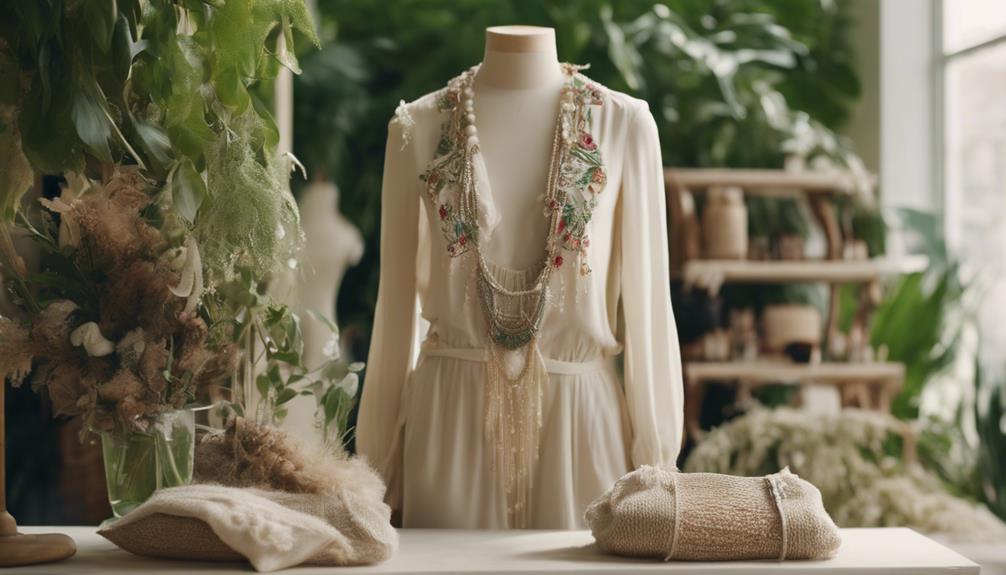
High-end sustainable fashion consistently pushes the boundaries of luxury by prioritizing ethical practices and innovative materials. You'll find that many brands have taken the lead in combining style and sustainability, proving that you don't have to sacrifice one for the other.
Here are four notable examples:
- Stella McCartney – A pioneer in sustainable luxury since 2001, she avoids leather and fur, focusing on innovative, ethical materials.
- Gabriela Hearst – Known for elegant designs, she made history with the first carbon-neutral fashion show at New York Fashion Week.
- E.L.V. Denim – This brand specializes in luxury pieces made from 100% upcycled materials, considerably cutting down on landfill waste.
- Ninety Percent – They operate on a unique model that donates 90% of profits to garment workers and charitable causes, emphasizing responsible practices.
These brands highlight how sustainable luxury can be both stylish and ethical, offering you choices that reflect your values without compromising on quality.
With these options, you can confidently contribute to a more sustainable fashion industry.
Popular Sustainable Footwear Brands
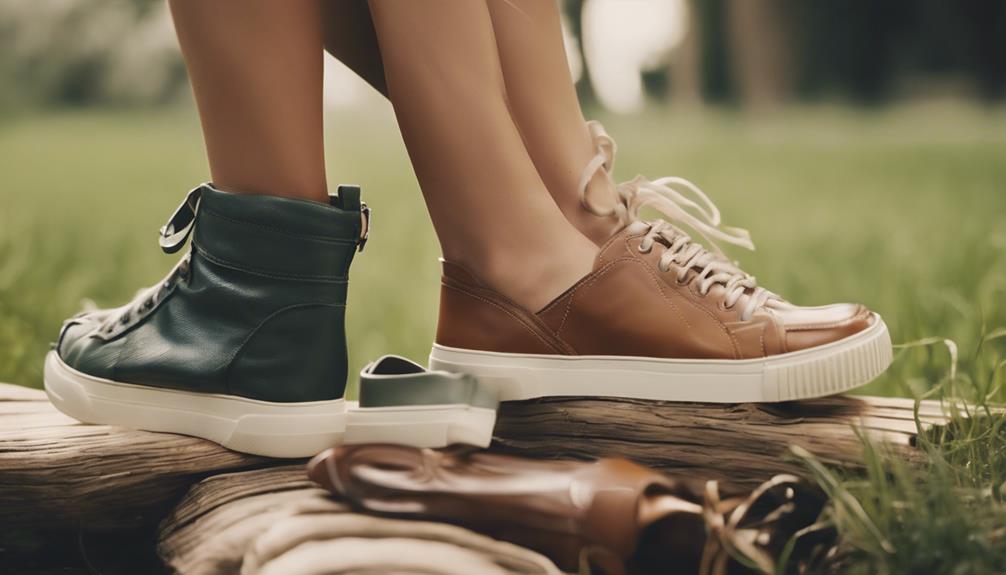
When you choose sustainable footwear, you're not just making a stylish choice; you're also supporting eco-friendly materials and ethical manufacturing practices.
Brands like Allbirds and VEJA showcase innovative designs that prioritize both comfort and sustainability.
Let's explore how these popular brands are changing the footwear landscape for the better.
Eco-Friendly Materials Utilization
Sustainable footwear brands like Allbirds and VEJA are redefining style by using eco-friendly materials that minimize environmental impact. These brands focus on sustainable materials and innovative production methods that align with environmental goals.
Here are some standout examples:
- Allbirds: They utilize natural materials like merino wool and eucalyptus tree fibers, greatly reducing their carbon footprint in production.
- VEJA: This brand produces eco-friendly sneakers using organic cotton, wild rubber from the Amazon, and recycled materials, ensuring sustainability throughout their supply chain.
- Rothy's: Specializing in stylish shoes made from recycled plastic water bottles, Rothy's is committed to reducing waste, with each pair crafted from about 6-7 bottles.
- TOMS: They've shifted to using sustainable materials like organic cotton and recycled polyester, operating under a one-for-one giving model that supports community impact.
Ethical Manufacturing Practices
Many popular sustainable footwear brands are leading the way in ethical manufacturing practices by ensuring fair wages, transparency, and environmentally friendly processes throughout their supply chains.
Brands like Nisolo prioritize fair compensation for artisans, ensuring a transparent supply chain that customers can trust. Toms operates on a unique one-for-one model, providing a pair of shoes to someone in need for every pair sold, while also using sustainable materials like organic cotton and recycled polyester.
Allbirds takes a focus on natural materials such as merino wool and eucalyptus tree fibers, reducing carbon footprints in their production. Veja champions ethical manufacturing by sourcing organic cotton and wild rubber from the Amazon, advocating for fair trade practices.
Rothy's impressively transforms recycled plastic water bottles into stylish footwear, showcasing a commitment to a circular economy. Lastly, Native Shoes embraces a 'Leave Nothing Behind' philosophy, using eco-friendly materials and offering a recycling program to minimize waste.
Innovative Design Approaches
Innovative design approaches are reshaping the footwear industry, with brands like Allbirds and Rothy's leading the charge in creating stylish, eco-friendly shoes. These brands focus on sustainable materials and ethical craftsmanship, greatly reducing their environmental impact.
Here's a look at some key players:
- Allbirds: They use natural materials like merino wool and eucalyptus tree fibers, minimizing carbon footprints throughout production.
- VEJA: This brand produces eco-friendly sneakers from organic cotton, wild rubber, and recycled materials, collaborating with environmental organizations to promote sustainability.
- Rothy's: Known for stylish flats and sneakers made from recycled plastic water bottles, Rothy's champions a circular economy and eco-conscious consumerism.
- TOMS: Their one-for-one model guarantees sustainable materials in footwear and extends into apparel, emphasizing ethical manufacturing and community impact.
These brands not only prioritize fashion but also commit to responsible practices, guaranteeing transparency in their supply chains.
Frequently Asked Questions
Who Is the Most Sustainable Fashion Brand?
Determining the most sustainable fashion brand can be subjective, as it depends on criteria like materials, practices, and overall impact. Brands like Patagonia and Stella McCartney often rank highly due to their environmental commitments and innovations.
Which Luxury Brands Are Not Sustainable?
Imagine buying a stunning handbag from a brand like Louis Vuitton, only to find out it contributes to significant waste and environmental harm. Many luxury brands prioritize profits over sustainability, leaving you questioning their true impact.
Is Zara Sustainable or Fast Fashion?
Zara's fast fashion model prioritizes rapid production, leading to environmental concerns. While it's made some sustainability commitments, its overall approach promotes overconsumption, making it hard to contemplate Zara a truly sustainable brand.
Why Is Sustainable Fashion Not Popular?
Sustainable fashion isn't popular mainly due to higher prices, fast fashion's convenience, and consumer indifference. Many perceive it as less stylish, while greenwashing creates skepticism about brands' true commitment to sustainability. Awareness remains low.
Conclusion
As you explore these incredible sustainable brands, picture a wardrobe bursting with vibrant colors, soft organic fabrics, and unique vintage treasures.
Each piece tells a story, reflecting your commitment to the planet and ethical practices.
Imagine stepping confidently into a world where fashion feels good, inside and out.
With every thoughtful choice, you're not just wearing clothes; you're weaving a tapestry of sustainability and style that inspires others to join the movement.
Let your fashion journey begin!
